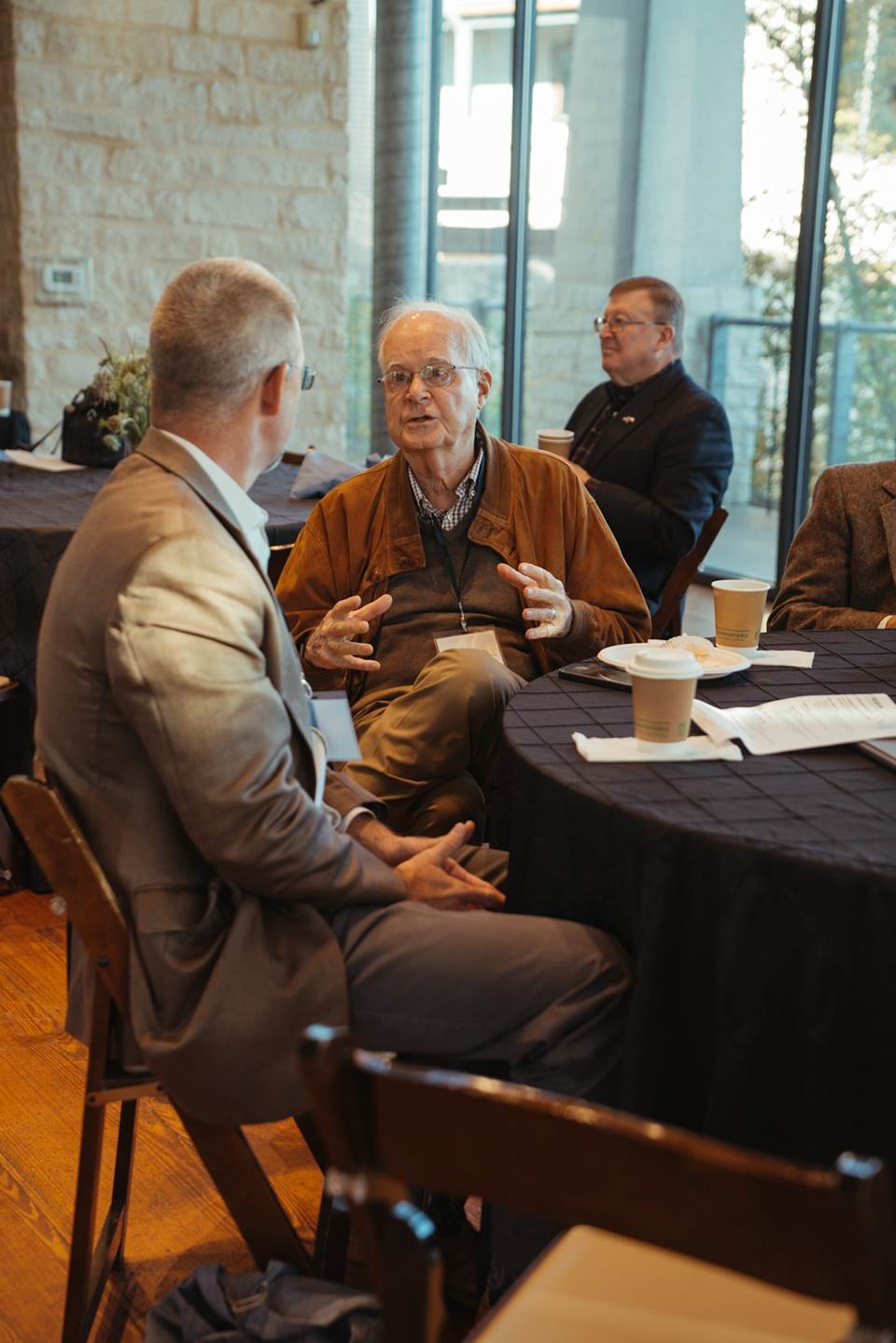

Podcast Ep. #3: The Endangered Species Act at the 50th Anniversary Symposium in Texas
December 13, 2023
Listen to Episode #3: The Endangered Species Act at the 50th Anniversary Symposium in Texas
Thanks for joining us for Part II of our Endangered Species Act series. The 2023 James G. Teer Conservation Leadership Institute cohort held its 50th Anniversary of the Endangered Species Act Symposium in November at the Lady Bird Johnson Wildflower Center in Austin, TX. The nine members of the cohort, including NRI's Shelby McCay and Addie Smith, recognized a timely opportunity to reflect on the Endangered Species Act (ESA or the Act) as we approach the 50-year mark since it was signed into law by President Nixon and an almost unanimous Congress. ESA experts from across the nation were invited to share their thoughts and expertise about the ESA’s legacy, successes and failures, and potential for the future.

“The ESA has teeth, and it has a broad reach,” said Gary Frazer, Assistant Director for Ecological Services at USFWS, during his opening remarks. “I view the ESA as an instrument of change...and these changes did not come easily.” Although the Act was signed into law with widespread favor, there was not much thought given to protecting endangered species and their habitats at the time. There was some growing public concern about the plight of endangered species, but people did not consider robust ecosystem protection or biodiversity, claimed Douglas Wheeler, an original author of the Act. One of the most remarkable developments he believes he has seen over the last half-century has been the ESA’s durability and flexibility to create landscape-scale conservation – a sentiment agreed upon by many of the panelists who spoke at the event. The law was written in such a way that it could act as a living, dynamic document to accommodate our changing world and culture.
Private Landowners
As the law was written, the implementation of the ESA and such large-scale conservation efforts is not possible without the cooperation and support of private landowners across the country. Each expert, whether from a federal agency, NGO, or business background, emphasized that the success of the ESA is not possible if you don’t build trusting relationships with the private landowners who manage endangered species habitat and healthy, working lands. The burden falls on the land management professionals to reach out and establish those relationships with landowners, include them in the conversation, and properly incentivize them to continue the good work they do to maintain healthy lands and support imperiled species. As Aldo Leopold, the father of wildlife management, wrote, “Conservation will ultimately boil down to rewarding the private landowner who conserves the public interest.”

The Role of NGOs and Other Federal Agencies
The primary agencies that implement and regulate the ESA fall within the Department of the Interior (DOI), but other federal agencies and nongovernmental organizations (NGOs) actively participate in the work of endangered species conservation. The Department of Defense (DoD) is not often considered a land managing agency, but they actively manage working lands through collaboration to both assist the mission of the DoD and protect the biodiversity and endangered species found on the lands. Ryan Orndorff, the Director of Environmental Planning and Conservation at the DoD, said “We can’t be the refuge or last resort for these species and still accomplish our mission.” Lands managed by DoD are often safe havens for endangered species, but without the assistance of private land managers to create continuous, healthy ecosystems, these efforts may be wasted.
NGOs and nonprofit organizations have also taken up the helm of endangered species conservation, but are often left out of the big discussions between agencies and landowners, says Mike Leahy, the Director of Wildlife, Hunting, and Fishing Policy for the National Wildlife Federation. There is a need for more overlap between organizations in these big discussions to create more successful outcomes, and it is important to invite tribal leaders into the discussion and encourage diversity where it is lacking.
Challenges and Criticisms
The ESA, much like many other laws, is not a flawless document and may need adjustment to stay relevant after so many years. Some of the panelists were asked what one thing they would change about the Endangered Species Act if they had the opportunity, and answers ranged from making it more difficult to have frivolous lawsuits to providing resources commensurate with the threats we face by climate change. Mike Brennan of NRI succinctly stated: “With climate change comes habitat change.” It is not a question of if, but when climate change will impact species, and that comes with some challenging questions. Species migration due to temperature changes will affect the habitat range of endangered species, and new extreme conditions may mean that the loss of a species cannot be prevented by good land management practices alone. Present-day conservation leaders need to begin asking these difficult questions and reexamine if the ESA properly addresses current and future needs regarding climate change and the loss of safe, healthy lands for vulnerable species.
Tools for the Future
Looking to the next 50 years of the Endangered Species Act, the experts had many encouraging words for the Teer cohort as the next generation of conservation leaders. They were encouraged to remain positive and passionate about the work, put in the effort to build trusting relationships with landowners and learn from many mentors. Mike Brennan advised the group to recognize that our existing tools are good examples but not blueprints—the ESA must remain a flexible document and adapt to whatever the future holds, and conservationists must keep innovating to meet the challenges.
Gian Basili, the Deputy State Supervisor for Ecological Services for the USFWS in Florida, shared some promising tools that have been successful in the state recently in conserving the Florida panther. Strategies like conservation banks, lands permanently protected for conservation, and payments to landowners for ecological services have proven promising. Above all else, he emphasized that agencies need private lands for the recovery of endangered species more now than landowners need them. It is crucial to pursue mutually beneficial outcomes for all parties involved and streamline processes to encourage participation. Basili said we need to make having a listed species on a property become something that is viewed as an asset rather than a liability for a landowner. The ESA is a piece of legislation that has evolved into something collaborative that builds relationships to create landscape-scale changes and conserve our threatened and endangered species for future generations.

Thank you
Thank you to the 2023 James G. Teer Conservation Leadership Institute cohort for putting together a wonderful event to reflect on this impactful Act and the changemakers who set the stage for its first 50 years.
Listen to the latest episode of The Land Steward Podcast where we had some discussions with folks behind the scenes of the symposium.
Learn More
Species Status Assessments
Compiling the best available science that will serve as the basis of ESA decisions from listing, delisting and downlisting.
Department of Defense Natural Resources Program
Supporting access to well-managed DOD lands, waters, and airspace by safeguarding natural ecosystems critical to the military mission


 Dr. Roel Lopez at the ESA Symposium
Dr. Roel Lopez at the ESA Symposium





